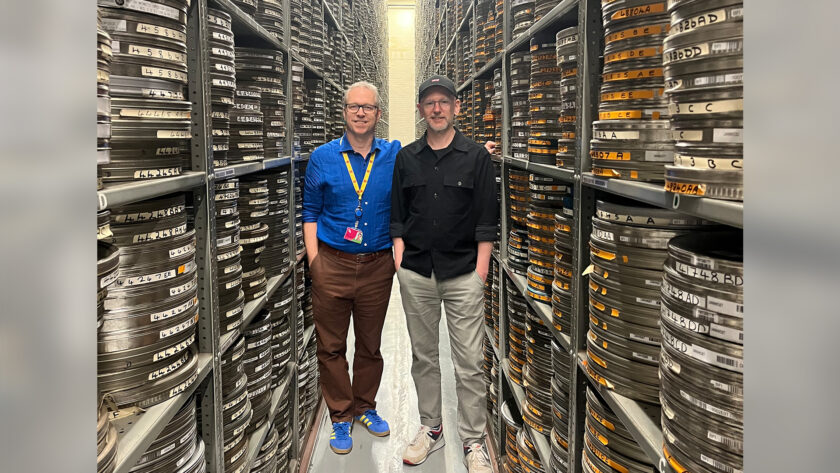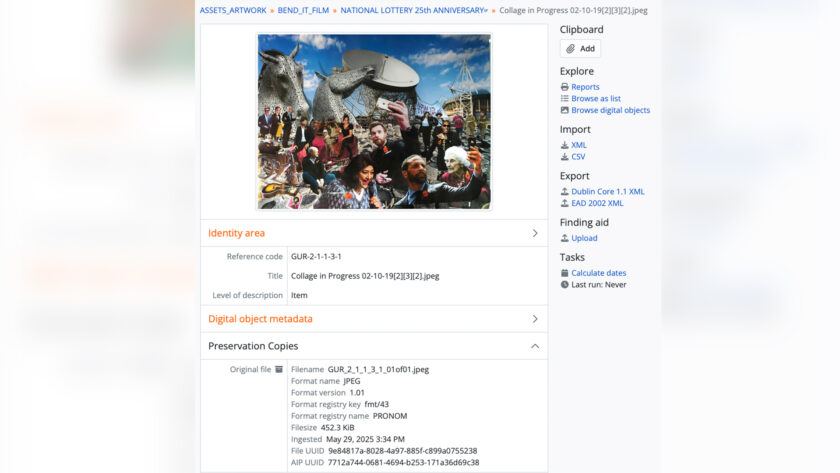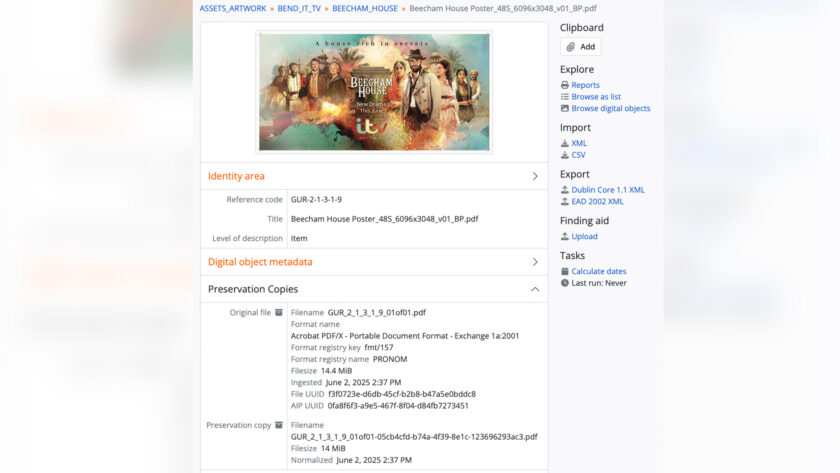Filmumentaries podcast – BFI Film on Film Festival special

Ahead of this year’s BFI Film on Film Festival, we were delighted to welcome Jamie Benning of the Filmumentaries podcast for a special tour of the J. Paul Getty Jr Conservation Centre.
During his visit, Benning spoke to James Bell (Senior Curator of Fiction and Programme Director, BFI Film on Film Festival), Kieron Webb (Head of Conservation), Chris Stenner (Film Laboratory Lead), Sonia Genaitay (Curatorial Archivist), Martin Coffill (Projectionist and QC) and David Jones (Film Scanning Lead), about the work of the Archive.
Through these interviews, Benning explores the expertise, time and resource needed to prepare and present an event on the scale of the BFI Film on Film Festival. From print cleaning, inspection and projection, to film printing, programme scheduling and print movement, the success of the festival is reliant on a vast network of BFI colleagues.
Go on your own journey of discovery via the special edition of the Filmumentaries podcast, available to listen to now.
– Alex Prideaux, Marketing & Events Manager (Our Screen Heritage)
Testing, testing, 1, 2, 3…

I was reading about quantum mechanics the other day (you know, standard bedtime reading with an easy story, boy meets girl and also doesn’t, both scenarios are true until we read the book) and it reminded me a little of testing a new digital preservation system.
How so? Well, in quantum mechanics, one can never predict exactly what is going to happen and the exact same experiment can be repeated multiple times, giving a different result each time. Sometimes testing a new system can feel like this until you get the hang of the system, but it is nonetheless an essential part of any project!
The system I am currently testing is Archivematica, an open-source, digital preservation system that the BFI National Archive has procured for the Our Screen Heritage (OSH) project (which is supported by the BFI Screen Heritage Fund, awarding National Lottery funding). There is also an online catalogue attached to Archivematica, called AtoM (short for Access to Memory). Archivematica will be used to preserve part of the born-digital document archives of two British film makers, with AtoM being used to display the preserved documents, although I hasten to add that the Collections Information Database will remain the primary point of access for these collections – we are not trying to completely reinvent the BFI National Archive’s system of preservation!
In my previous job I did a lot of work with these systems as part of my day-to-day duties, so the ins and outs of the systems are fairly familiar to me at this point. The part that is somewhat new to me is the initial system setup – a part of the process that in my previous job was completed prior to my joining the company. A lot of my work up to this point in time for the OSH project has been to coordinate with colleagues to understand the result we want to achieve and to then call on the user manual and my past experience to work out how best to achieve that result in the new systems. A lot of this work also includes creating test ingests to feed into the system and see what comes out the other end. Whilst this can get a bit repetitive, it is worth it to know that we will have a much easier time when it comes to ingesting the actual collection!

Some of the challenges that have come up in testing include less common file formats and special characters in file names. As we are working with the archives of film makers, we are coming across some formats that are very specific to the film-making community, such as Final Draft, which is software for writing scripts. Thankfully, as the project is very much rooted in research and development, we have time to work out the best way to approach preservation of these formats! The other major challenge has been working with special characters in file names. Some of the content is coming from Google drive, which is more relaxed as to which characters can be used in file names. This can cause problems when trying to work with this data in another system with stricter rules on filenames, but I’m not mentioning this to shame anyone or their way of working, just to remark how working across different systems can throw up unexpected complications!
Overall, I feel that testing has been a successful process, and that we have the workflows in place and ready for the incoming collections. Whilst some of the challenges encountered during the testing have been real head scratchers, they have all helped to refine the system setup and quantum mechanics has not had any effect on the end results! Well, it probably does at some level, but that is a story for another day. No spoilers though please, as I have and haven’t read that book!
– Tom Wilson, Digital Preservation Archivist
The Inside the Archive blog is supported by the BFI Screen Heritage Fund, awarding National Lottery funding.
